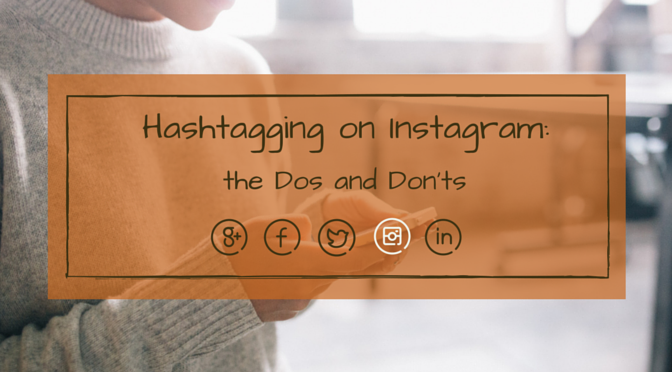
If you’re a business in the stages of building your Instagram following, the key is making sure people are discovering your content. Images aside, hashtags are arguably the most fundamental part of your Instagram presence.
People locate content by searching for tags, so you need to make sure you’re attaching the right ones to draw users to your posts.
Handily for tagging novices, Instagram has a predictive feature that allows you to see how many existing posts use a certain tag as you’re typing it. Obviously this is great as a general benchmark: you can instantly see which tags are popular and which aren’t.
That’s not the whole story, though. Don’t be completely seduced by big numbers– not every hashtag with a high volume of posts is going to be as relevant as you think.
For example, if you’re an interiors company posting images about #design, you might think you’re using a relevant and incredibly popular tag. You are– but unfortunately, so is everyone else. ‘Design’ is a very general term, so although it’s popular, the content tagged #design can range from typography designs to shoe designs to tattoo designs before it gets round to interiors.
That’s not to say that you shouldn’t use non-specific tags– just make sure that you give some thought to the context in which your content will appear when users search for it.
A key part of that is initial research. Do map out the keywords you want to associate with your content, and search them on Instagram to see whether they’re being used as tags, and, if they are, whether those tags are popular. Don’t forget to check what people are using tags for: if you’re posting pictures of French interiors, the #frenchy tag might seem appropriate for your content– but your posts will end up in a stream of French bulldog pictures, which might not be the image you want to portray.
Remember! Not everything makes a good hashtag– don’t make your tags #toolongorhardtoread.
If you’re not sure which tags will get the best engagement for your business, sites exist to help you find high-performing hashtags– ‘Tags For Likes’ is a good one (also available as an app for both iOS and Android). They’ll provide you with a list of tags relevant to a certain topic, which you can copy into the description of an Instagram image.
Be careful with these, though– they can be useful as a starting point, but ideally you’ll tailor them to reflect your individual brand. Do prune out any suggestions not relevant to your content or brand, and add in specifics, such as brand tags (e.g. #shakesocial), or tags identifying core elements of your content (e.g. #tips or #french).
A big difference between Instagram’s hashtags and Twitter’s is sheer volume. On Twitter, a one or two tags is best– and likely all you’ll have room for. On Instagram, the story couldn’t be more different. Don’t be afraid of tagging– since you’re free of Twitter’s spatial constraints, in theory the number of tags you can add is unlimited.
In practice, it’s best to reach a happy medium with your tags. Not enough means you’re reducing the opportunities users have to discover your content, while too many may distract from tags you’d like to emphasise– like brand tags or slogans which would lead users to more of your content.
So there you have it– the basics of tagging your content on Instagram. Next month we’ll be going into a bit more depth and talking about the recent addition of emoji hashtags (and why you should be avoiding the eggplant).
Any #questions? Leave them in the comments below!
By Moya Vaughan Evans
Moya is a digital marketing expert, blogging specialist and Social Media Manager at Shake Social. Struggling to maintain your own blog? We can help!

